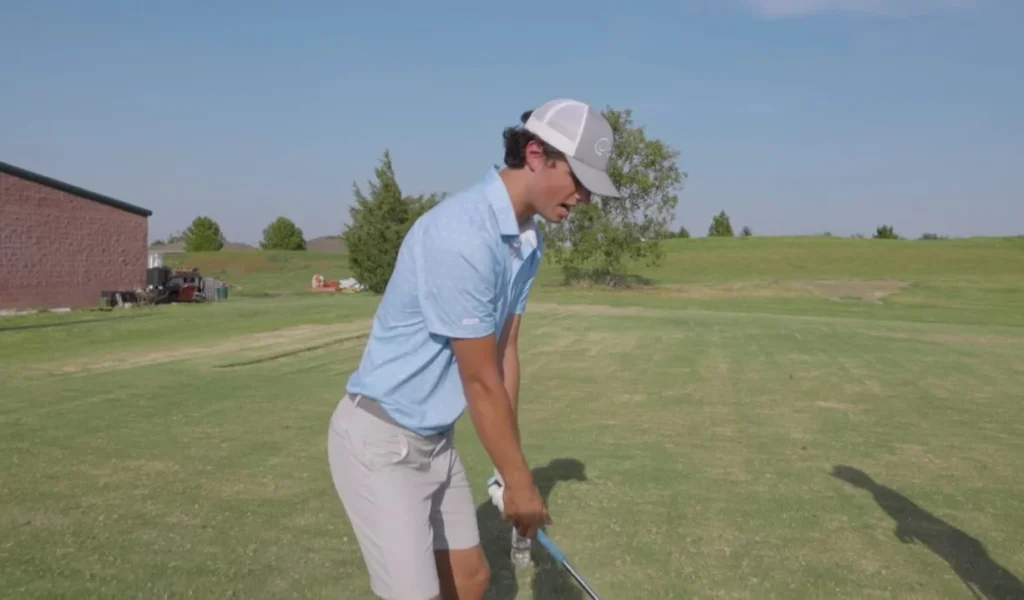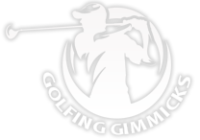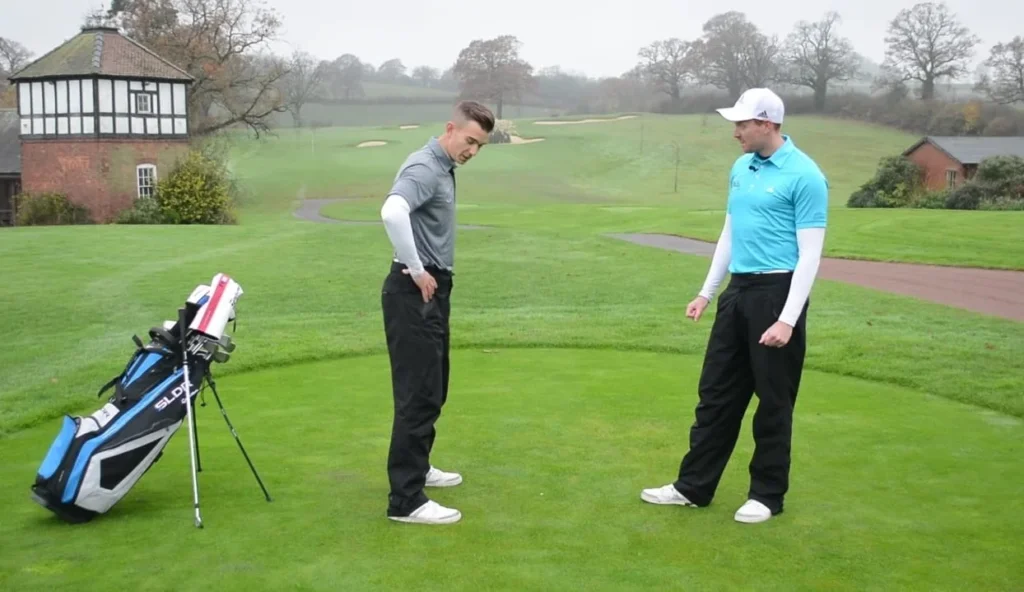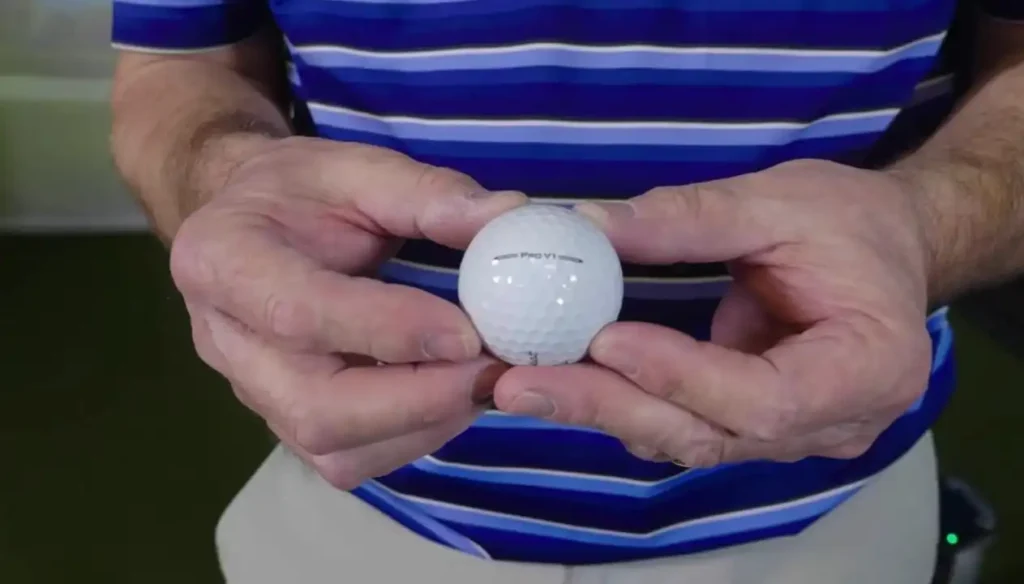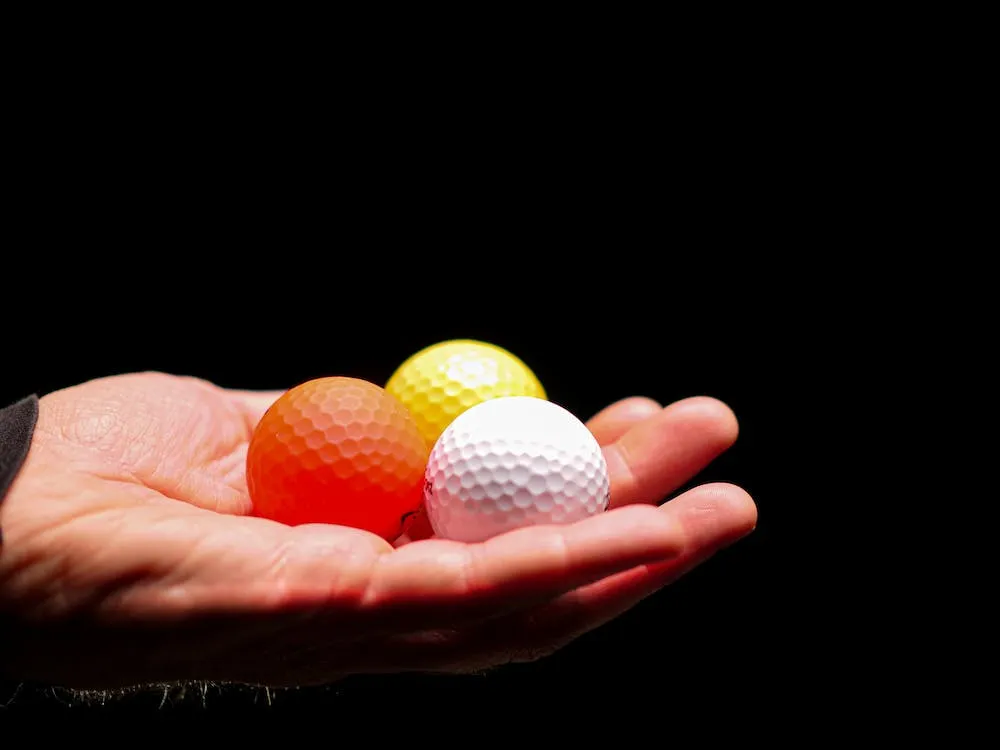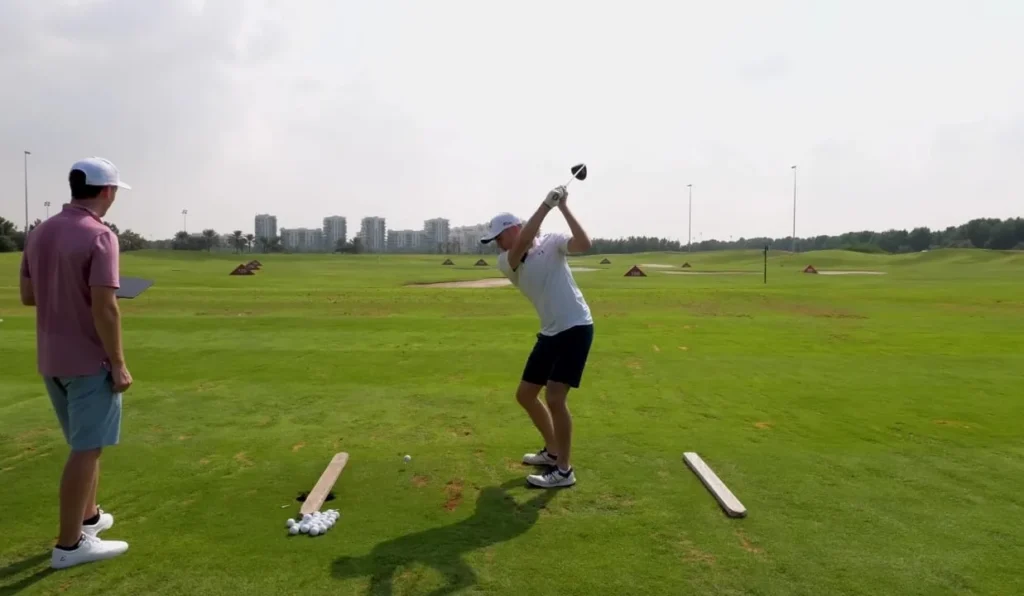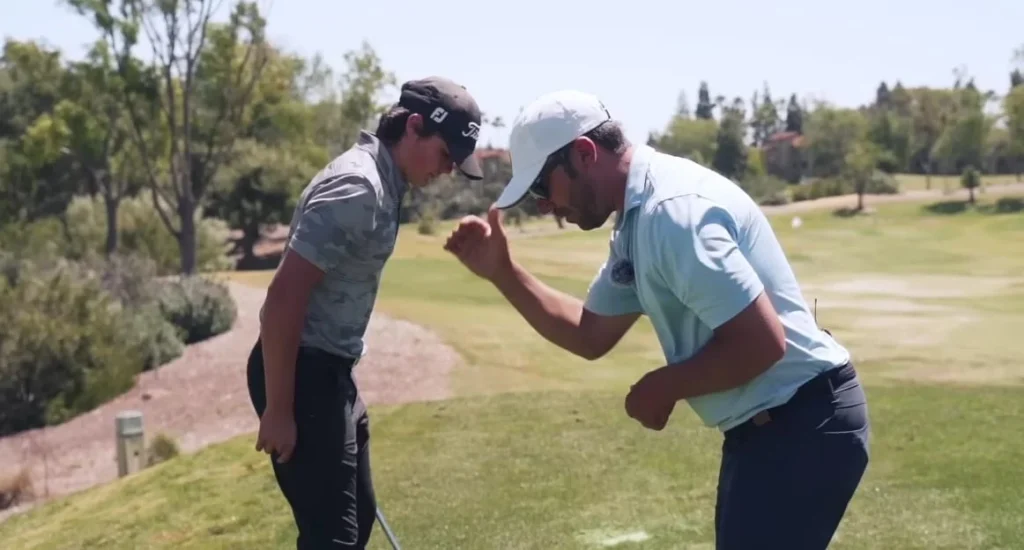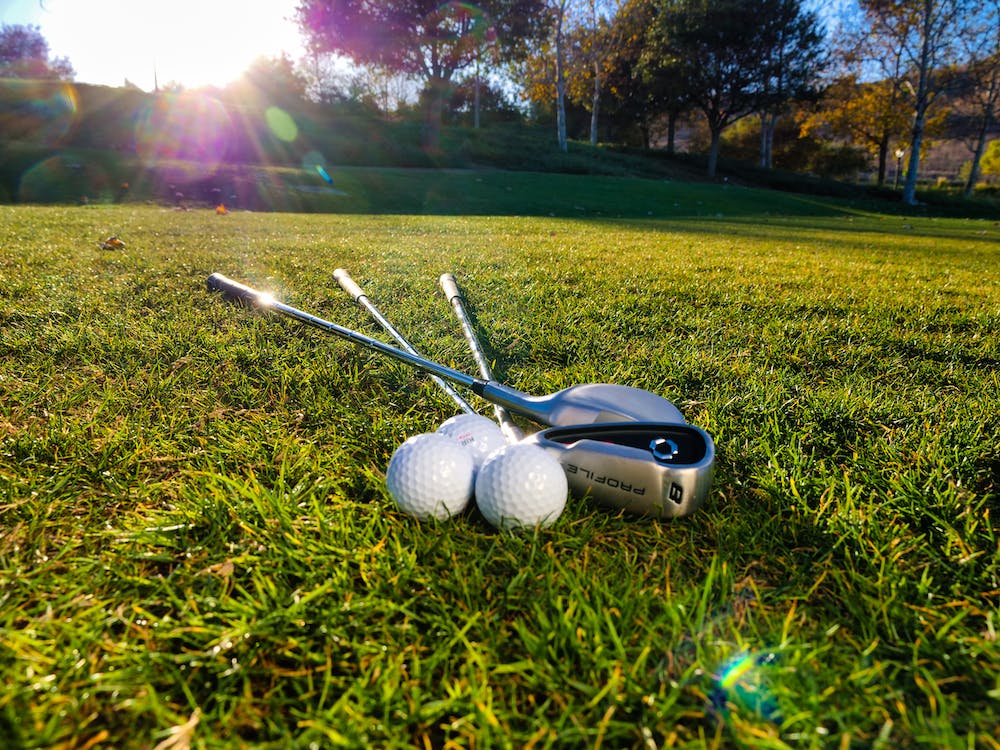Golf’s hook and slice shots present numerous unique challenges to golfers. One striking phenomenon that often baffles spectators is their perception that hooks travel farther than slices; here we explore both scientific and mechanical reasons that contribute to this disparity in distance, giving golf enthusiasts a better grasp of these diverse shot shapes. Let’s dig deeper into the “golf slice vs hook” in detail.
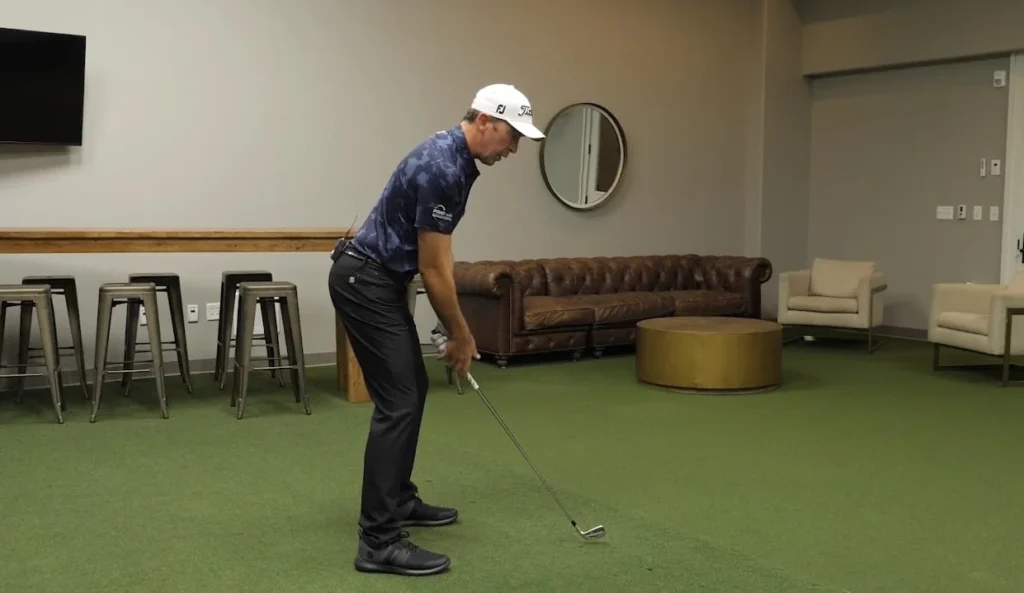
Golf Slice VS Hook
Unraveling the Mystery: What is a Hook and a Slice?
First, we have to understand what hooks and slices are in golf. Only then we will be able to decipher the truth behind “slice vs hook”. Unraveling the mystery shouldn’t be difficult after you learn what hooks and slices stand for.
Understanding the Hook
“Hooked” golf shots refer to any shot that starts off to the right (for right-handed golfers) but then abruptly curves leftward in mid-air; it’s like having a ball move with its own will and dramatically turning toward the left side of the target area.
Cracking the Code of the Slice
On the flip side, a “slice” refers to shots that start left of the target line (for right-handed golfers) but take an unexpected rightward turn, leaving players confused by its path. Golfers may experience puzzlement over these seemingly bizarre detours by their ball.
The Science Behind the Spin: Ball Flight Explained
Now, we understand “golf slice vs hook” in detail. It’s time to look into the science behind the spin and explain why mischievous shots occur requires some science. Golfers traditionally learned about “Old Ball Flight Laws,” which focused on club paths. Today with modern technology we embrace “New Ball Flight Laws,” emphasizing clubface’s role in controlling ball trajectory.
Sneaky Causes of Hooks and How to Tame Them
Let’s move even further into the forest of “golf slice vs hook” to appreciate this difference better. In this section, we will discuss some factors affecting your golf ball swing. If you want to improve your motion, then you should check out our article on golf swing posture for further details.
Here, we’ll explore some factors you should look out for before swinging the golf club.
Before You Swing: Pre-Swing Factors
Grip Matters
Imagine that your grip is the handshake with your club. A strong grip where V’s of hands extend beyond trail shoulder can lead to hooks by telling the ball it should make an unexpected left turn, something it wasn’t expecting when starting play.
Stance and Alignment
If your feet and body are pointed too much to the right, your swing path could end up following too much from within. This will lead to a hook. So, you should into your pre-swing posture to ensure a “hook vs slice” condition doesn’t arise.
Posture Predicaments
Do not slump! Poor posture could result in your shots hooking out of position; by standing taller your shots might follow suit more effectively. You can now appreciate the difference between slice vs hook in golf better.
Ball Position Pitfalls
Are your ball and club too far back in your stance? This could be one of the reasons for hooks; try moving it forward some and see if this helps with controllable shots. That’s how you can master the issue of “golf slice vs hook” in detail.
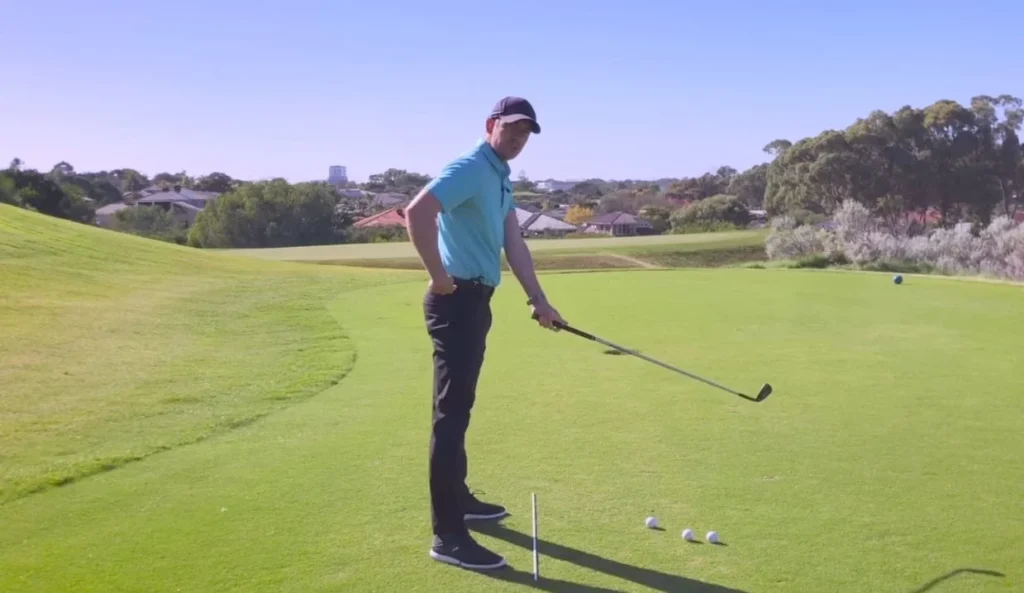
Mid-Swing Madness: In-Swing Factors
Next, you should check out the proper way to swing the club and make an impact with the ball. So, we’ll go further into our discussion of “golf slice vs hook”, exploring some in-swing factors affecting your stance and posture.
The Way You Take It Back
Imagine starting your swing poorly; any deviation during takeaway could set up for an out-of-bounds hook shot! Stay on target to keep things on course! That’s how you can overcome the problem of hook vs slice in golf very easily.
Wrist Woes
Your lead wrist plays an integral part in this drama; too much or too little bending of it could shift the clubface’s position and potentially result in the hook. If you wish to avoid the “golf slice vs hook” drama, then it’s more than essential to attend to your lead wrist.
Downswing Decisions
As you approach the ball, an inside-to-out swing path with a closed clubface could set off an inside hook. Be conscious of that path when approaching.
Impact Matters
At this crucial juncture in a golf swing, your clubface should always remain square upon impact for optimal control and to reduce hooking potential. Closed clubface impacts often result in hooks. That’s how you can maximize control and avoid hooks altogether.
The Art of Letting Go: Release
Pronation, the rotation of your forearm during release, can play an instrumental role in creating hooking phenomena. Too much pronation during release could even increase the chances of hooking. Now, we understand all the major factors affecting “golf slice vs hook”.
Sneaky Causes of Slices and How to Steer Clear
But some sneaky causes of hooks and slices also exist. Amateurs remain unaware of them but pro golfers realize how to tackle these issues properly. So, as we progress in our study on “slice vs hook in golf”, it becomes more than necessary to look into some of these sneaky causes.
Grip Adjustments
Imagine having a weak grip, wherein the V’s point more toward your chin than they should; this might result in slices. Unexpected shots that suddenly move in an unpredictable rightward trajectory will be eliminated this way.
Stance and Alignment (Repeat Offender)
An open stance could pose some difficulties; if your body leans too heavily leftwards, your swing could move from outside to inside and lead to slices.
Posture Revisited
Where should your weight lie? Too much in the heels could contribute to an outside-to-inside swing path and, eventually, produce a slice.
Ball Position Redux
Are You Too Close to the Ball in Your Stance? Doing this might help explain a slice. Try moving back a bit to observe changes.
Mid-Swing Mayhem: In-Swing Factors (Yes, Again!)
Some other factors sneak in when you’re in the middle of swinging the club. If you wish to master the “golf slice vs hook” discourse, then it’s important to look into these sneaky factors. Here, we’ll explore these in-swing factors.
The Start of Something Beautiful
As you take back the club, be wary. Rolling your hands too much may open the way to an unnecessary slice; try keeping things smooth and steady instead.
The Wrist Chronicles Continue
Frequent wrist flexion will ruin a slicer’s shot and maintain a square clubface. Keep that wrist under control to maximize slice control.
The Crossroads of the Downswing
An outside-to-in swing path combined with an open clubface can result in slices. To improve results, straighten that path and square the clubface for greater success.
Impact Chronicles: It’s Not Over Yet
Failing to address the ball with an open clubface can result in slices. For optimal results, always ensure a square impact to avoid this result in slices.
The Release: More Than Just a Movie Ending
Pronation issues could contribute to your shot being off target; let the club do its work and you should end up with straighter hits. That’s how you can tackle the “golf slice vs hook” issue once and for all.
Gadgets to Improve Hook/Slice
If you want to improve hook/slice, check out these four products. These products will correct golf slicing, training you for clubface awareness. We’ve analyzed hundreds of products on Amazon to realize which one would be the best thing for our readers. In the end, this is what we got i.e., the perfect products for golfers dealing with hook/slice. Your job now is to go through these products, compare their pros and cons, check out the pictures, read the most recent reviews, and explore further details. In the end, you will find the best product to become a better golfer. Just click on the blue links and see if the product helps you play golf like a champ. Surely, you will buy at least one of these things:
| Cross Corded Golf Grips the Basic Need | More Information |
| Golf Training Aid, Golf Swing Aid Helps with Clubface Awareness | More Information |
| Golf Slice Corrector – Portable Golf Practice Tool for a Proper Swing | More Information |
| EyeLine Golf Speed Trap, Improve Your Swing with Slice and Hook Corrector | More Information |

Conclusion
Mastering the difference between a hook and slice in golf can be like embarking on an amazing journey! By understanding fundamentals, identifying swing path issues, and employing specific drills to transform their swings and reduce unpredictable shots through targeted practice and awareness sessions – golfers will soon transform their swings while becoming better players! However, every journey requires practice and awareness. Swing away, folks!
If you wish to dig deeper into the “slice vs hook” debate, we’ve written an entire article covering the causes of hook for your perusal. So, do check it out after finishing this piece.
FAQs – Golf Slice vs Hook
1. What’s the difference between hook and slice?
Understanding the fundamental differences between a hook and slice shot can be essential to improving one’s golf game. While both shots involve excessive sideways curvature, one differs primarily in direction: hooking spins the ball hard right-ward (in the case of right-handed players); slice curves more sharply rightward.
2. Do More People Slice or Hook?
Google searches and golf instructors confirm this trend: more beginners tend to slice than hook. A slice involves left-to-right ball flight and often presents its challenges; hence it remains an area of inquiry and concern among golfers.
3. Why Do I Hook and Slice My Driver?
Drivers, being powerful yet difficult clubs to master, may cause considerable frustration for golfers. Hooks and slices with this club may arise from various causes including swing mechanics, grip issues, or inconsistent ball position – these factors must be identified and resolved for more controlled drives and straighter drives to take place.
4. Why Does a Hook Go Further than a Slice?
As is commonly observed, hook shots tend to travel further when hit with equal power than slices do, this difference is explained by each shot’s properties: hooks generate more topspin which causes increased roll when played on firm and fast fairways; thus creating added distance that golfers who know how to harness its power can harness effectively can utilize to their advantage.
5. What Causes a Hook in Golf?
Understanding what causes a hook shot is vitally important when looking to enhance one’s golf swing. A common culprit may be an open clubface at impact which produces leftward spin on the ball resulting in an illegal hook shot. By altering the swing path and clubface alignment accordingly, solutions could potentially exist that address this problem.
6. How to Fix a Hook in Golf?
Fixing a hook requires making adjustments across various aspects of the swing, such as improving setup and alignment, increasing grip strength, limiting wrist extension during the top of swing swing, or decreasing wrist extension at the top. All these modifications aim to promote more controlled, straighter ball flight.
7. What Causes a Slice in Golf?
Slices often stem from an open clubface relative to the swing path; when struck, this causes it to spin from left to right before curving rightward when struck again. Understanding its cause(s), such as grip issues or swing path deviations is vital if golfers wish to eliminate or reduce slices in their game.
8. How to Fix a Slice in Golf Swing?
Addressing a slice involves corrective steps targeted towards its source. Some strategies for fixing it include strengthening grip strength and checking ball position before swinging; these adjustments help create more square impacts that decrease the chances of open-faced shots.
9. How to Fix a Hook in Golf Grip?
The grip is an essential aspect of the golf swing, and an incorrect grip may contribute to both hooks and slices. Corrective action for an unbalanced grip involves evaluating hand placement to achieve more neutral positions for optimal impact results and prevent the excessive closure of the clubface during impact.
10. What’s the difference between hook and slice irons?
While the general principles of hook and slice shots apply to all clubs, there are nuances specific to irons. Differences in loft, clubhead design, and shaft length can influence the outcome of iron shots. Understanding these subtleties is essential for golfers seeking consistency in their iron play.
